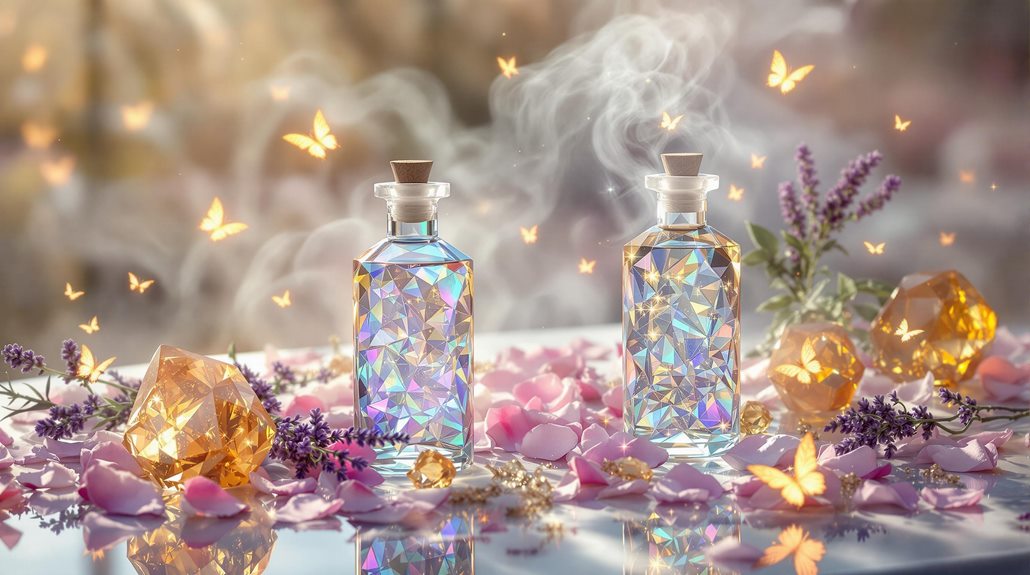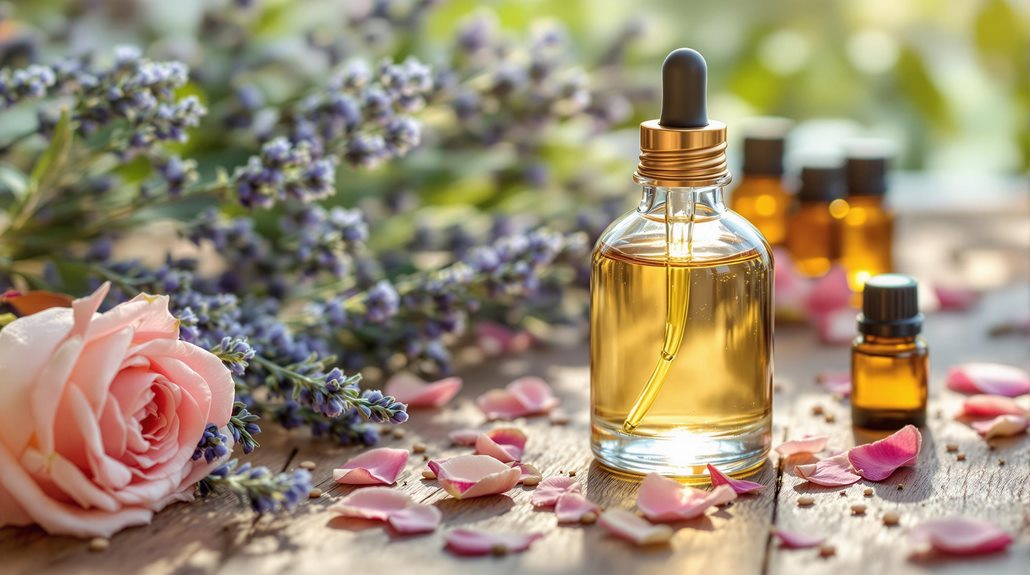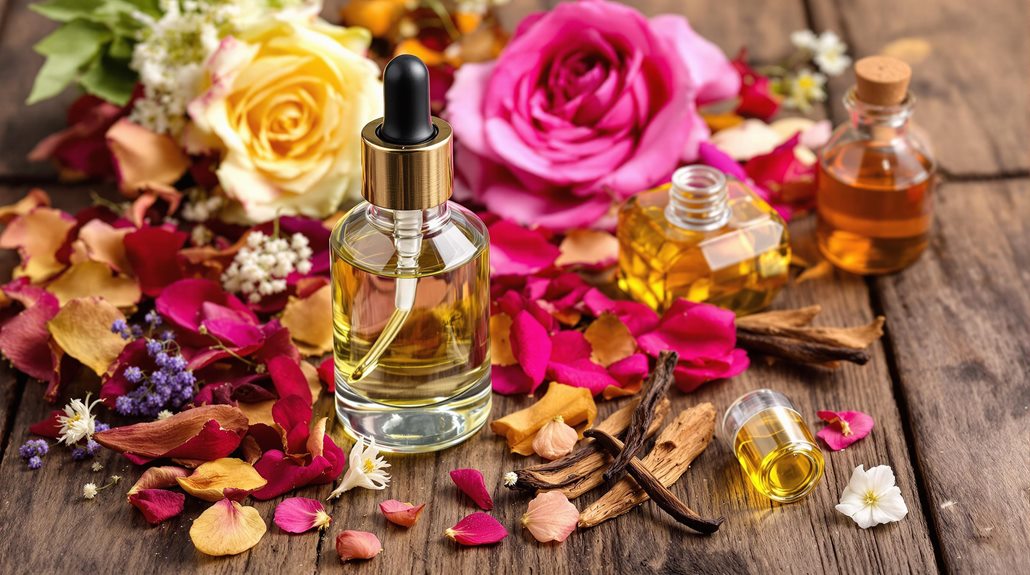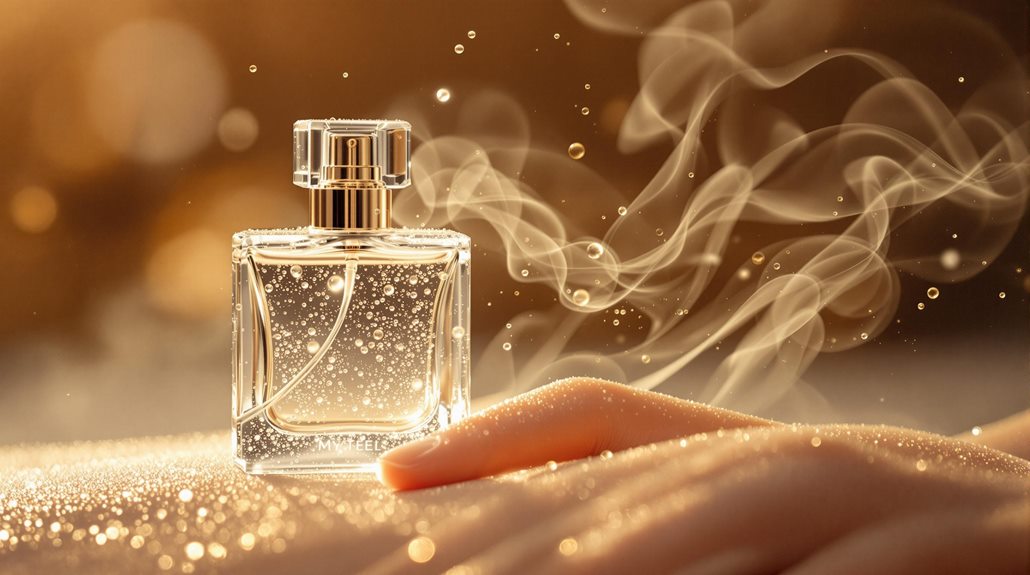How to Make Solid Perfume: A Fun and Easy DIY Project
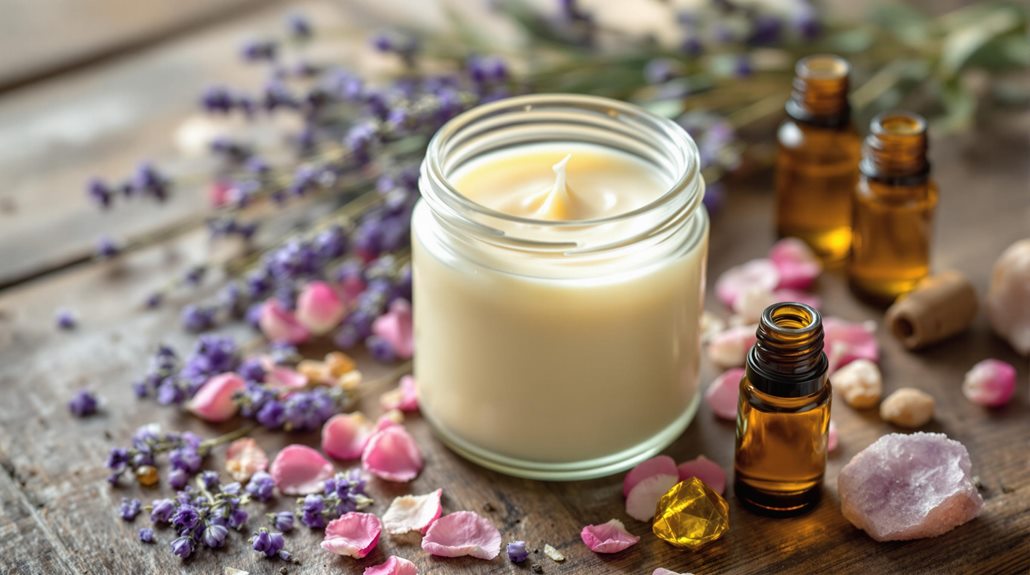
You can create your own solid perfume at home with just a few key ingredients and supplies. Start by melting beeswax in a double boiler, then blend in your chosen carrier oil like sweet almond or jojoba. Add your favorite essential oils following the 30-50-20 rule for base, middle, and top notes to create a unique fragrance. Pour the mixture into small containers like vintage lockets or tins, and let it solidify completely in a cool, dry place. Apply to pulse points where your body heat will activate the scent. There's so much more to uncover about crafting your signature solid perfume.
Essential Supplies and Ingredients
Making solid perfume requires a straightforward collection of supplies and ingredients that you'll find easily online or in craft stores. The core components include beeswax, which serves as the solidifying base, and your choice of carrier oil such as sweet almond or jojoba oil. These two ingredients work together to create the perfect consistency for your solid perfume.
You'll also need essential oils to add your desired fragrance. When selecting essential oils, consider combining different scents to create your unique signature blend. The small containers you'll use to store your finished product are equally important - vintage lockets, clean Altoid tins, or any small, sealable containers work well for this purpose.
For the melting process, you'll need a double boiler setup. If you don't have one, you can create a makeshift version using a heat-safe glass bowl placed over a pot of simmering water. Don't forget to gather measuring tools to ensure proper ratios between your beeswax and carrier oil, as these equal proportions are vital for achieving the right consistency in your finished solid perfume.
Blending Your Perfect Scent
With endless fragrance combinations at your fingertips, creating your signature scent blend requires both artistry and careful planning. When crafting your solid perfume, start by selecting three complementary fragrance oils or essential oils that'll work together harmoniously. Choose one as your base note, another as your middle note, and the third as your top note.
Begin with small amounts of each oil, following the 30-50-20 rule: 30% base note, 50% middle note, and 20% top note. For example, you might combine earthy patchouli as your base, floral jasmine for the middle, and citrusy bergamot on top. If you're using essential oils, calming options like clary sage work well for those with sensitive skin.
Test different scents by mixing tiny batches first. Place a drop of each oil on a perfume testing strip, then wait several minutes to see how the fragrances develop and interact. Keep detailed notes of successful combinations and adjust the ratios until you've achieved your desired scent profile. Remember that solid perfume tends to hold fragrances longer than liquid versions, so a little goes a long way.
Melting and Mixing Process
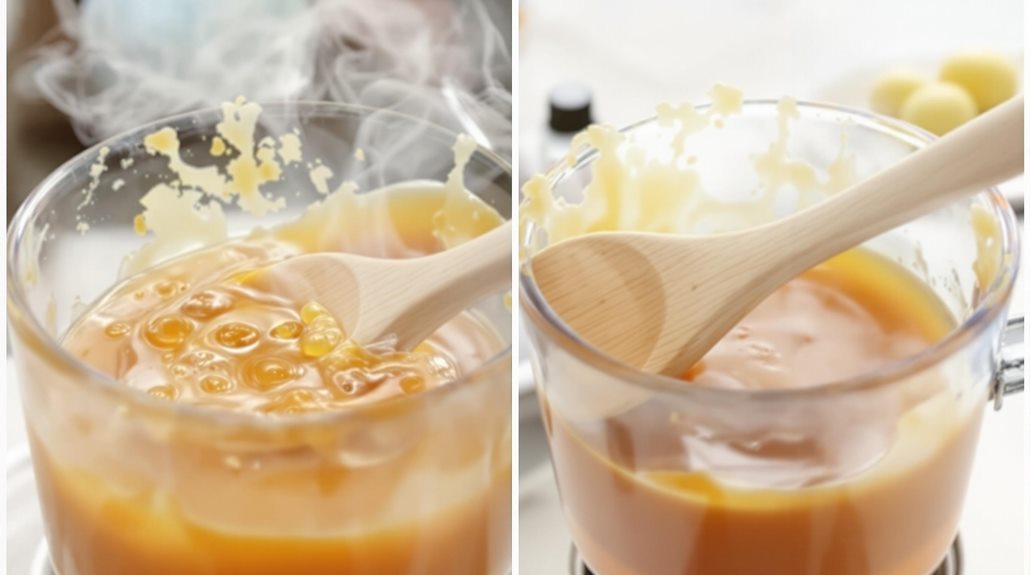
The melting and mixing process requires three essential steps to create your solid perfume base. First, you'll need to melt the beeswax using a double boiler method, guaranteeing it's completely melted before proceeding. Next, add your carrier oils, such as jojoba or sweet almond oil, stirring gently until they're fully incorporated with the beeswax.
For a successful mixing process when making solid perfume, follow these key points:
- Keep the temperature steady and low to prevent the ingredients from burning
- Stir continuously while adding oils to certify even distribution
- Remove from heat immediately once everything's combined
- Work quickly before the mixture starts to solidify
- Pour the mixture carefully into your containers while still liquid
Once you've added your essential oils or fragrance blend, you'll need to work efficiently. The mixture will begin to solidify as it cools, so pour it into your prepared containers right away. Don't move or disturb the containers until they're completely cooled and solidified. This typically takes about 30 minutes at room temperature, though you can accelerate the process by placing them in the refrigerator.
Setting Your Solid Perfume
After pouring your perfume mixture into containers, proper setting becomes your next focus. Whether you've chosen lip balm tubes or small tins, you'll need to let your creation solidify completely before using it. During this process, place your containers in a cool, dry spot away from direct sunlight and resist the temptation to check the consistency too soon.
Once your solid perfumes have fully hardened, they're ready to use. One of the benefits of using sweet almond oil in your base is that it would work perfectly with your body's natural warmth to release the fragrance. Simply use one gentle swipe across your pulse points - behind your ears, on your wrists, or along your neck. The heat from your skin will activate the scent, creating a subtle but lasting fragrance throughout the day. As the scent fades, you can easily reapply without worrying about overdoing it. To preserve your creation's quality, always store it in a cool place away from heat sources. If you'd like to share your recipe with friends, you can send the instructions to their email address, helping them create their own signature scent.
Storage and Application Tips
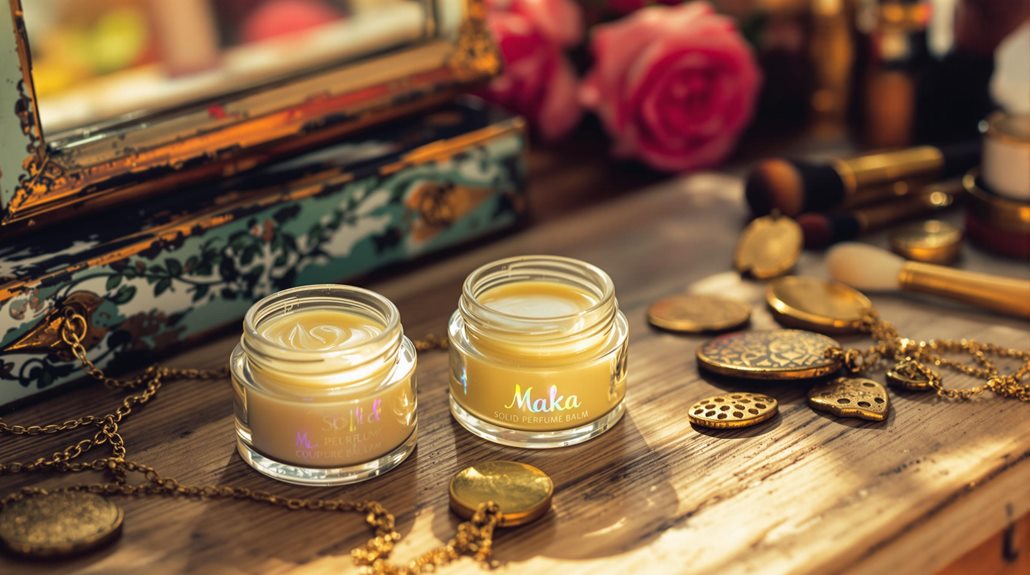
Proper storage and application stand out as essential factors in maximizing your solid perfume's longevity and effectiveness. When you make solid perfume at home, it's incredibly easy to maintain its quality by storing it in a cool, dry place away from direct sunlight. This simple step prevents melting and preserves the integrity of your essential oils, making your Easy Solid perfume last for months or even over a year.
To get the most out of your DIY creation, here are the key application tips to follow:
- Apply to pulse points where body heat will naturally diffuse the fragrance
- Start with a small amount - you can always use another layer if needed
- If one spot feels too strong, use instead a different pulse point
- Reapply throughout the day as the scent fades
- Store in a dark container when not in use (Required fields are marked with proper storage conditions)
Remember that personal preference guides how much product you should apply. Your solid perfume's performance depends largely on proper storage and thoughtful application, ensuring you'll enjoy your handcrafted fragrance for many months to come.
Conclusion
Now you're ready to enjoy your handmade solid perfume! You'll love how portable and long-lasting it is compared to liquid fragrances. Don't forget to label your creation with the date and scent combination. If you're pleased with the results, try making different versions with new essential oil blends. With proper storage in a cool, dark place, your solid perfume will stay fresh for months.

